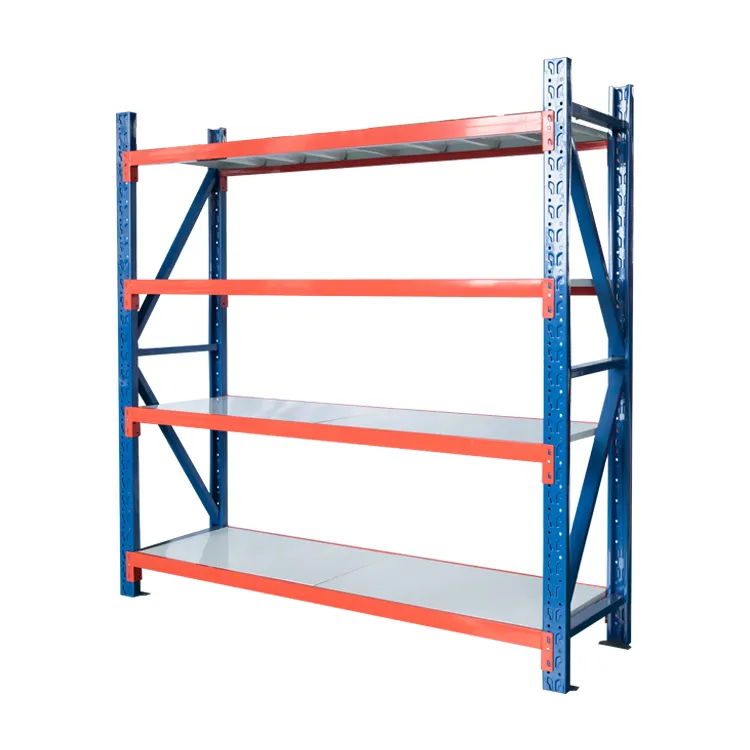Assessing Your Warehouse Requirements
Inventory Characteristics Analysis
The starting point for figuring out what kind of warehouse racking works best begins with knowing exactly what's sitting on those shelves. Warehouse managers should really pay attention to product dimensions, how much they weigh, and their packaging style since these factors determine which racking systems will work properly. Take those big boxes or heavy machinery parts for instance they often need something sturdier than standard racks, maybe even cantilever systems that handle oversized loads better. Then there's the question of how fast things move through the facility. Products that sell quickly need easy access so workers don't waste time digging around, while slower moving stock can go where it's harder to reach. The seasonal nature of business adds another layer of complexity too. Some products suddenly need extra storage space when demand spikes during certain times of year. That's why smart warehouse layouts incorporate some degree of adaptability, allowing for rearrangements without completely overhauling the entire system whenever inventory patterns shift.
Space Utilization Metrics
Getting the most out of warehouse space means looking at both the ceiling height and floor area available. When we talk about cubic utilization, it basically tells us whether we're making good use of all those empty corners and overhead areas. Many warehouse managers now run layout analyses through specialized software programs that can show what happens when they rearrange things differently. This helps spot where space gets wasted or overused. Measuring things like how wide the aisles need to be, how high shelves can go, and exactly how much room each racking system takes up becomes really important for maximizing storage potential. These numbers help keep products moving smoothly without creating bottlenecks, something particularly crucial in facilities handling all sorts of different items. Good space planning does more than just save money on rent though it also makes sure workers can move safely around the place and follow established procedures without constant interruptions.
Key Warehouse Racking System Types
Selective Pallet Racking
Selective pallet racking stands out because it can handle all sorts of pallet sizes while still being super accessible. Workers can reach any individual pallet they need without hassle, which makes this system great for warehouses dealing with lots of different products across their inventory. Installation isn't complicated either, and grabbing what's needed from storage happens quickly, saving time during daily operations. Industry data shows these racks continue to dominate the market space thanks largely to how affordable they are compared to other options plus their ability to fit into almost any warehouse setup. We see them everywhere really, particularly in standard warehousing facilities and places involved in distributing goods to retailers since having fast access to stored items just makes business sense when orders come rolling in.
High-Density Storage Options
Drive-in racking and mobile shelving represent high density storage options that warehouses use to get the most out of their floor space while making picking orders faster. These systems cut down on the need for wide aisles between racks, which means companies can store way more goods in the same area they previously had. The real advantage comes from packing more pallets into each square foot of warehouse space. For businesses struggling with limited storage capacity, especially those handling large volumes or time-sensitive products like food items, switching to these dense storage configurations makes all the difference. Many logistics managers report seeing storage improvements of around 40% after installation, though results vary based on product types and operational needs.
Critical Selection Factors
Storage Density vs Accessibility
Choosing the right warehouse racking system involves balancing storage space against how easy it is to get things out when needed. More storage capacity usually comes at the cost of harder access points, creating real headaches for managing stock levels over time. Take drive-in racking as an example. While it packs away tons of product in tight spaces, workers end up dealing with LIFO retrieval rules where the last item stored gets picked first. That makes grabbing specific items much slower than with selective pallet racks that let staff reach any pallet directly from all sides. Warehouse managers know this well because selective systems typically boost picking speeds by around three times what they see in denser alternatives. The difference matters a lot in operations where speed counts.
Load Capacity Requirements
Getting a good grasp on load capacity matters a lot when picking out warehouse racking systems because it keeps everything structurally safe and up to code with industry standards. When we know exactly what weight limits different types of racks can handle, we avoid those nasty structural failures that nobody wants to see happening in their warehouse. These load capacity numbers come straight from the manufacturers themselves plus various industry regulations that tell us precisely how much weight each system can take without buckling under pressure. Meeting these requirements isn't just about ticking boxes either it makes the whole operation run smoother while protecting both workers and valuable stock from accidents down the line. A few extra minutes spent checking specs now saves headaches later on.
Safety and Compliance Considerations
Structural Integrity Standards
The structural integrity of warehouse racking systems depends on following both national and international standards that ensure safety and last long enough for regular use. Groups like OSHA in the US and similar regulatory bodies around the world set these rules based on years of research into material strength and load capacities. When companies follow these standards during installation, they have to use certain types of steel beams and proper anchoring methods that actually work in real warehouses. Skipping over these requirements doesn't just risk worker safety either. There are plenty of documented cases where improperly installed racks collapsed under normal operating conditions, causing injuries and expensive damage. Maintaining proper structural integrity matters for several reasons beyond basic safety concerns. It prevents those unexpected failures that shut down entire facilities, avoids hefty fines from regulators who inspect warehouses regularly, and keeps insurance costs from skyrocketing due to repeated incidents.
Operational Safety Protocols
Warehouse safety rules aren't just nice to have they're absolutely vital for keeping workers safe on the job. Smart warehouse managers know that checking storage racks regularly and running thorough training sessions makes all the difference. These checks catch problems before they become disasters, while proper training gives staff the know-how to work around those heavy metal structures without getting hurt. A good safety program isn't something that gets set and forgotten either it needs constant attention to spot new dangers as they arise. Warehouses that stick to these basic safety guidelines see fewer accidents happen, keep their people healthy, and stay on the right side of OSHA regulations without breaking a sweat.

Implementation and Future-Proofing
Budgeting and ROI Analysis
A solid budget plan for warehouse racking systems helps companies keep their spending under control without breaking the bank. When putting together this budget, it's important to factor in not just the upfront purchase price but also those hidden costs like installation work and regular maintenance that comes with running warehouses day after day. Smart businesses track these numbers closely because knowing where money goes now means they won't be caught off guard when unexpected expenses pop up later down the road. And let's not forget about looking at the big picture too. Running some kind of ROI calculation gives management a clearer view on whether their investment in particular racking solutions actually pays off in the long run or if there might be smarter alternatives out there worth considering.
Scalability Planning
When it comes to running a warehouse, scalability matters a lot, particularly for companies planning expansion or dealing with those pesky seasonal ups and downs. Putting money into racking setups that let managers tweak things around or expand later on makes sense because nobody wants their storage solution stuck in last year's configuration. Take adjustable pallet racks for instance these days they're pretty common in most facilities since they handle different sized goods without needing everything torn out and rebuilt from scratch. Warehouses that think ahead when choosing their racking options tend to stay nimble enough to handle whatever surprises come their way in the marketplace, which honestly saves them headaches down the road when business picks up or shifts direction unexpectedly.
FAQ
What are some key considerations when choosing a warehouse racking system?
Key considerations include inventory characteristics, space utilization metrics, storage density versus accessibility, and load capacity requirements.
How can high-density storage solutions improve warehouse efficiency?
High-density storage solutions can maximize warehouse space and improve order picking efficiency, freeing up valuable areas for additional inventory.
Why is safety and compliance important in warehouse racking systems?
Safety and compliance ensure structural integrity and operational safety, helping to prevent accidents and ensure smooth warehouse operations.

